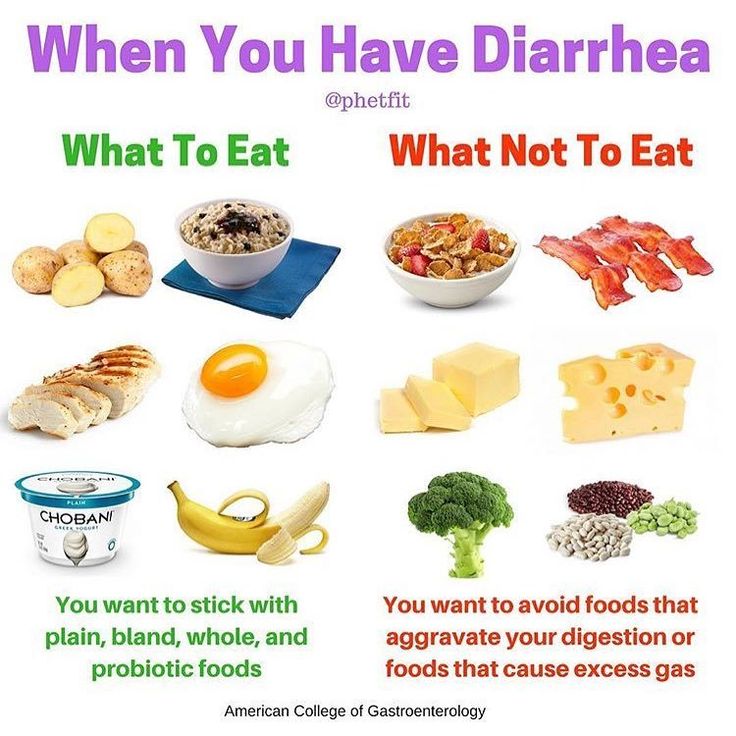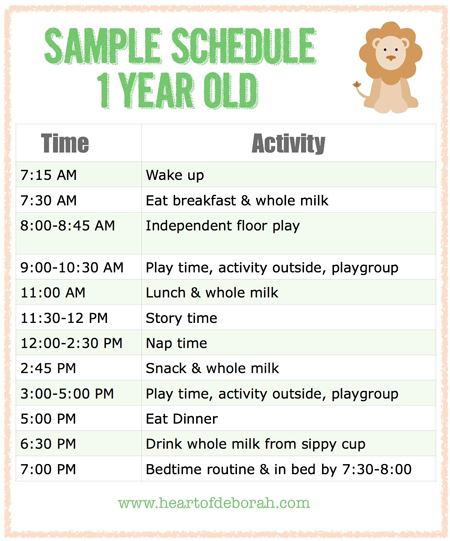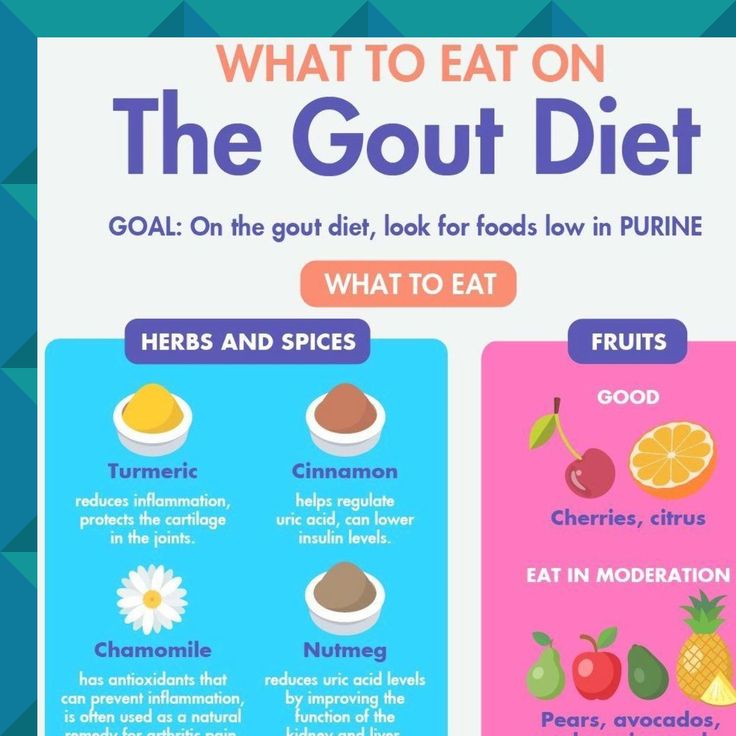Probiotic rich foods for babies
Probiotic Foods for Kids: 6 Easy, Healthy Options
Learn about the benefits of probiotic foods for kids and where you can easily find them.
You’ve heard the phrase: Your health is your wealth.
Well, if your health is your wealth, your gut health is priceless.
I should know.
A few years ago, I made a business trip to another country. During my stay, I acquired a parasite. (sad face)
I became very sick and needed nearly a month of treatment with strong antibiotics to get rid of the parasite.
After that, it took months to heal and re-build the healthy gut I once had.
What is Gut Health?
We all have a digestive system. It helps our bodies digest the food we eat so we can absorb the nutrients from food.
Within our gastrointestinal tract, or gut, live trillions of bacteria.
Scientists call this our gut microbiome, which refers to the microsystem or environment contained within our digestive tracts.
Exciting and emerging research teaches us that our microbiome may be responsible for much more than food digestion.
From happy, hopeful mood states to a robust immunity, we’re learning that a healthy gut microbiome is key to our health.
We Want a Diverse Microbiome
Of course, when you have trillions of bacteria in your gut, some of them are going to be helpful, and some not so much.
The balance of good and bad bacteria in the gut influence your health.
While research has targeted the connection between gut health and obesity, brain function, immunity and more, probiotics and fermented foods are a common recommendation for helping the gut microbiome stay balanced and healthy.
Probiotics are “live microorganisms that, when administered in adequate amounts, confer a health benefit on the host,” according to a consensus panel from the Food and Agriculture Organization of the United Nations and World Health Organization (FAO/WHO).
Research on probiotics in children have suggested the following potential benefits of probiotics:
- Reduces inflammation of the gut in premature infants, and possibly prevents necrotizing enterocolitis (NEC)
- Increases the good bacteria in the microbiome of healthy, breastfed infants
- Prevents diarrhea in children taking antibiotics
- Reduces crying in babies with colic
- Reduces likelihood and symptoms of eczema
- Prevents respiratory tract infections in day care and preschool
- Reduces symptoms of irritable bowel syndrome, or IBS (studies are from adult subjects, yet medical practitioners are applying these findings to children)
While many studies on probiotics and gut health have been done, these studies highlight specific strains of probiotics.
Experts warn that long term benefits and effects of probiotics on health are still unknown.
Additionally, probiotic content varies from brand to brand in that they contain different strains of probiotics and combinations of them.
Each strain of probiotic has a different effect on the gut, depending on the individual’s gut microbiome.
Food with Probiotics
Fermented foods contain live microbes and may confer a beneficial effect on the gut.
For example, fermented dairy products have been associated with a reduction in Type 2 diabetes in adults.
Yet, experts point out that it can be difficult to tease out whether health effects come from live microorganisms or the nutritional quality of the food itself.
The bottom line: Foods with probiotic containing living cultures can add beneficial bacteria to the gut so your child can reap the health benefits.
Probiotic Foods for Kids
In my work with kids, gut health comes up a lot. Parents are curious about whether they should start a probiotic, or not.
Parents are curious about whether they should start a probiotic, or not.
Generally, if a child is healthy or has gut issues like constipation or lactose-intolerance, I like to see families increase their consumption of fermented foods.
6 Foods to Introduce to Kids
You might recognize yogurt as a source of live and active cultures, yet, you might not realize there are several other fermented foods from which to choose.
The six I list here are kid-friendly fermented foods with which your child may enjoy.
1. Yogurt (with Live Cultures)
Made from milk that has been fermented with bacteria, yogurt has been shown to help with diarrhea and irritable bowel syndrome in children.
Not all yogurt is equal, though. Some yogurts have live cultures, which means there are active probiotic strains within the yogurt.
In other yogurts, the cultures have been killed during processing.
Tip: Choose yogurts with live or active cultures.
Here’s a guide for choosing the best yogurt for your child.
2. Kefir
Kefir is a fermented milk drink made by adding kefir grains to cow’s milk or goat’s milk.
Personally, it’s one of my favorites and I’ve had great success introducing this option to kids, even picky eaters!
Even though kefir can have a sour flavor, many brands offer flavored versions like mango, strawberry and blueberry.
More potent than yogurt, kefir hosts a wide variety of gut-friendly probiotic strains. It’s also well-tolerated by people with lactose intolerance.
Tip: Offer a few ounces in the morning with breakfast.
3. Pickles
Pucker up! Pickles may be fermented in a solution of salt and water, or in a vinegar solution.
Cucumbers pickled with salt and water ferment over time. Coupled with the naturally present lactic acid in cucumber, this produces active cultures and a sour flavor.
Pickles made with vinegar are not a source of live and active cultures.
Tip: If you’ve never tried pickling cucumbers in salt and water, give it a whirl!
4.
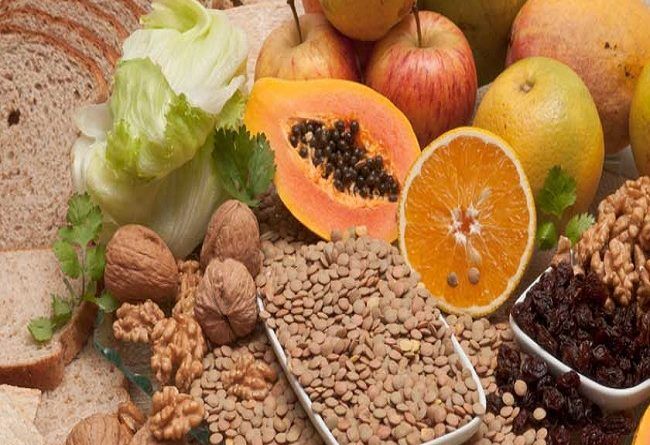 Buttermilk
ButtermilkButtermilk may contain live, active cultures, however, the buttermilk products available in the grocery store may not contain live, active cultures due to processing.
Always check the label for evidence of cultures. Cultured buttermilk can be made at home and is started with live, active cultures added to fresh milk or cream.
The buttermilk is allowed to ferment, producing a cultured buttermilk. Cultured buttermilk can be an addition to baked goods like biscuits and to make delicious pancakes.
5. Cheese
Most cheeses are fermented, but only some cheeses are a source of live cultures. You can find them by looking for a label that states “with live and active cultures.”
Gouda, mozzarella, and cheddar cheese are examples that may contain living cultures.
6. Tempeh
Tempeh is a high protein meat substitute made from fermented soybeans. Fermentation lowers the phytic acid in beans, making nutrients like iron and zinc more available to the body for absorption.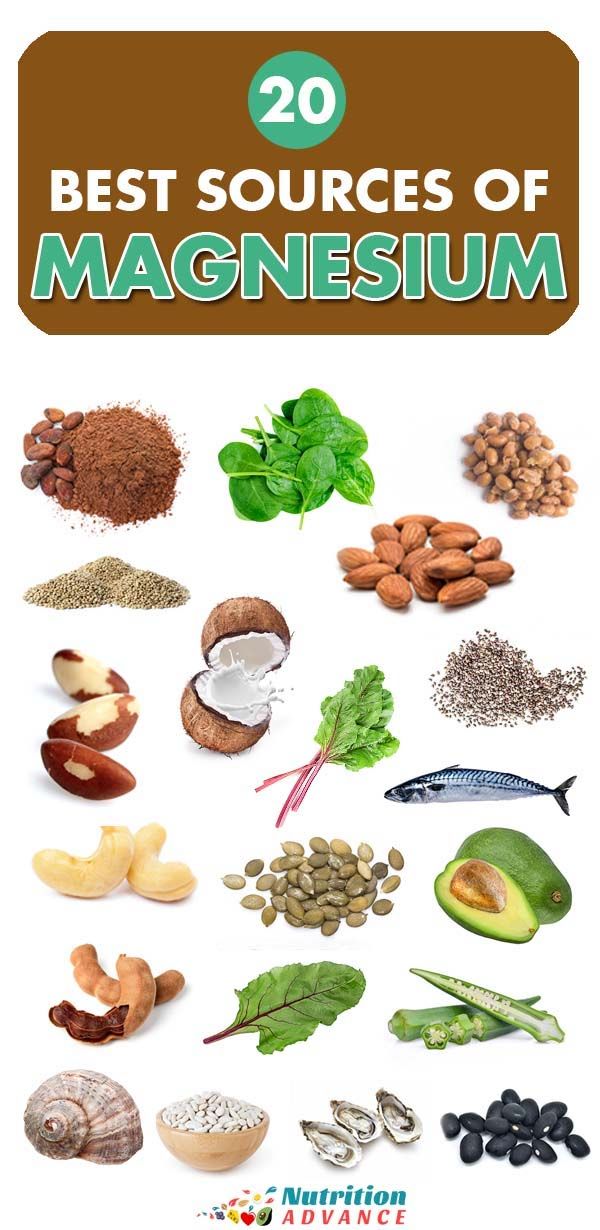
The process of fermentation also causes the production of vitamin B12, which is not typically present in beans, making tempeh a nutritious meat alternative for vegetarians.
More Fermented Foods
Other fermented food sources can be found in the refrigerator!
Look for sauerkraut, kombucha, miso, natto, and kimchi.
And, of course, go ahead and try these with your child too!
I want to know…which are your favorite fermented foods?
Need More Help with Feeding Kids?
Check out the on demand library, programs and books at The Nourished Child.
Probiotic Foods for Kids - Weelicious
Are you looking for probiotic foods for kids? They’re essential for gut health and easier to get than you may know.
PinThe first question you may ask is, “what are probiotics?” The word itself sounds like a little creature, and that’s actually partly true. Probiotics are live microorganisms that have tons of health benefits for your body and brain when you eat them.
These microorganisms are naturally present in your digestive tract and help aid in your digestions and can even reduce inflammation in your gut. Our first reaction may be to avoid bacteria. While that may be smart in certain cases, some bacteria, like probiotics, can actually promote better health!
Why are probiotic foods for kids important? There are tons of health benefits including improved digestion, better immune function, healthier skin, reduced risk for some diseases and even weight loss.
It may feel daunting to try to get your child to eat some of these foods, but they’re all surprisingly kid friendly. Many can have a salty or intense flavor which I have seen kids immediately open up to from the very first bite, so give your child a chance even if they have never tried one of them before.
When children’s bodies are developing and trying new foods on a weekly basis, it’s important to be eating plenty of probiotics. The question many people ask is how do you get them into kid’s through their diet and what are the best foods to eat. Here’s my list of probiotic foods for kids that may or may not already be on their list of favorite foods.
Here’s my list of probiotic foods for kids that may or may not already be on their list of favorite foods.
1. Yogurt: this creamy treat is loaded with friendly bacteria which may reduce inflammation and help kids taking antibiotics. It’s important to enjoy yogurt with live cultures and to avoid yogurt which includes added sugar.
2. Kimchi: this sometimes spicy Korean side dish is truly addictive (says one of my kids). Often made with cabbage and a few other vegetables it contains a lactic acid bacteria that helps promote digestion.
3. Sauerkraut: not only is it rich in fiber and made from lactic acid bacteria, but it’s also one of the most tasty probiotic foods for kids.
4. Kefir: it contains several strains of friendly bacteria and is considered a better source of bacteria than yogurt. We add it into smoothies and drink it on it’s own.
5. Tempeh: it’s a fermented soy bean food with a nutty earthy taste. We love cutting it into cubes to add to a lunch box, sautéing or air frying it.
6. Kombucha: one of our favorite fermented tea drinks that comes in a variety of flavors. It does contain low levels if caffeine and alcohol, so you don’t want to give your child more than a few ounces at a time.
7. Miso: this fermented soy bean paste is unbelievably delicious in fish recipes, in a stir fry and especially in a big bowl of miso soup at a Japanese restaurant.
8. Pickles: they’re a great source of healthy probiotic bacteria that may improve digestion. Pickles also happen to be one of my kids favorite foods.
9. Probiotic powder or capsules: probiotic powders can easily be added to smoothies or other drinks. Try two of my favorites probiotic powders here and here!
What are some of your probiotic foods? Let me know in the comments below!
Published August 4, 2022 by Catherine McCord
Categorized in Tips
About the Author
Catherine is a mama of three. A Kentucky girl living in California. Here’s what I know: all kids can be great eaters and mealtime must be easy.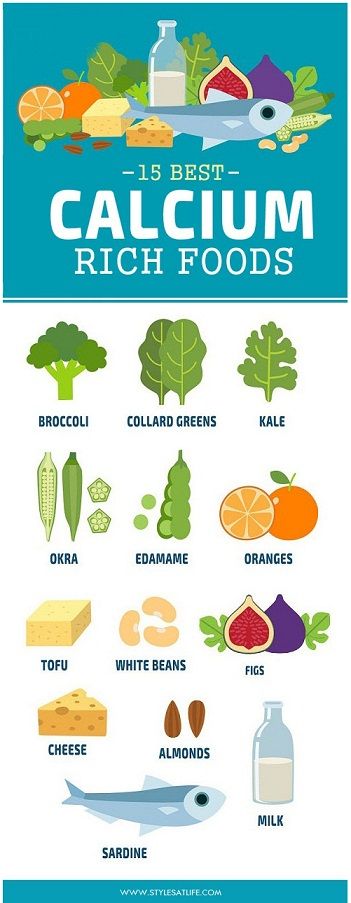 I create simple, healthy recipes the whole family will love.
I create simple, healthy recipes the whole family will love.
What to eat to be healthy - 10 foods rich in probiotics
Probiotics are bacteria beneficial to the intestinal microflora that have a positive effect on the state of the human body. Sources of probiotics are kefir, cheeses, yogurt, as well as special nutritional supplements and medications. In this article, we will talk about the benefits of probiotics for the body, as well as which foods contain the maximum amount of probiotics.
Everyone knows that probiotics are good for digestion, but they don't stop there. So, what benefits do probiotics bring to the human body:
- Strengthen the immune system.
- Increase energy levels through the production of vitamin B12.
- Useful for bowel problems, including intestinal inflammation.
- Makes breath fresher.
- Improve skin condition.
- Help with flu and colds.
- Reduce the effects of antibiotic treatment.
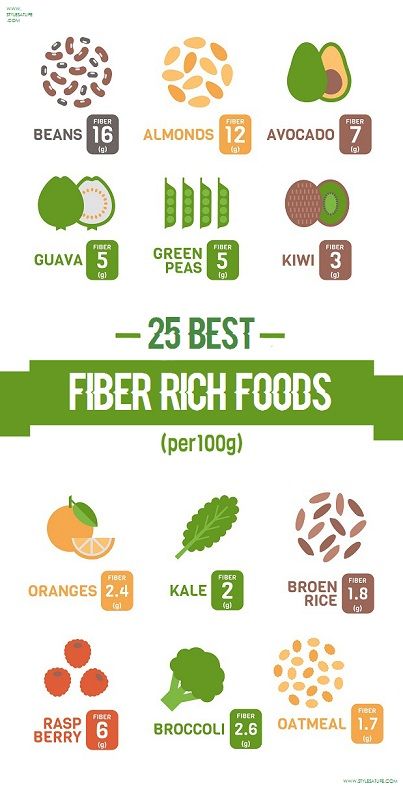
- Helps to lose weight.
Conversely, what happens when you don't get enough probiotics? Lack of probiotics can lead to digestive problems, worsened skin conditions, reduced immunity, and many other unpleasant consequences.
Here is a list of foods that are high in probiotics.
1. Yoghurt
Yoghurt is one of the record-breaking probiotic foods. Yogurt is made from milk with the addition of beneficial bacteria, mainly lactic acid and bifidobacteria. Numerous studies have proven that yogurt is very good for health - regular consumption of yogurt has a beneficial effect on digestion, the immune system and heart function. There are many types of yogurt on the market today, and not all of them contain live bacteria - so read the label before buying. Read more about the benefits of yogurt in our material "10 reasons to start eating yogurt - how this product will be useful for you."
2. Kefir
Like yogurt, kefir is one of the healthiest fermented milk products.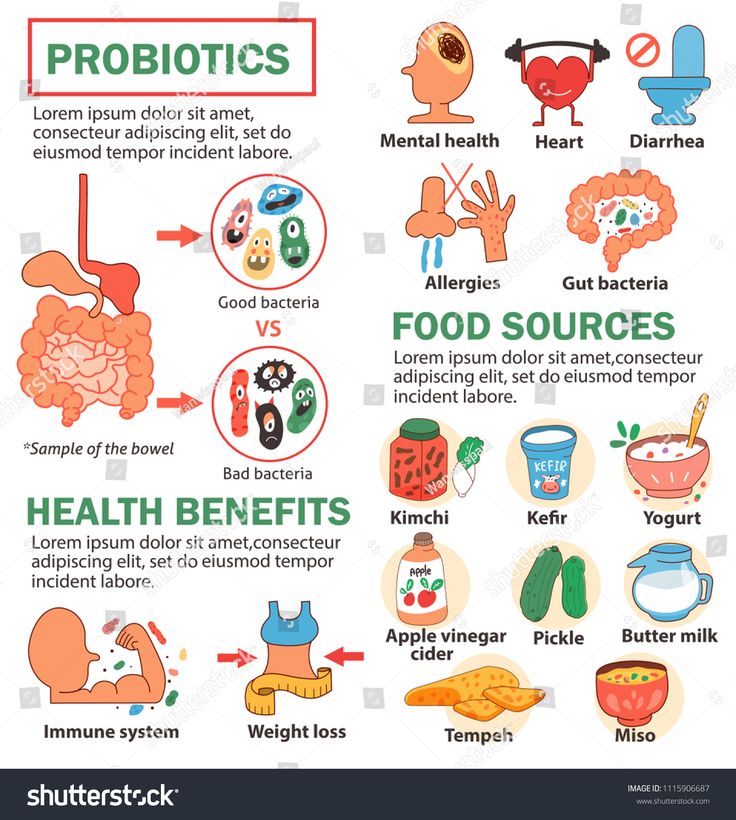 To produce milk kefir, kefir grains, which are cultures of lactic acid bacteria, are added to milk. Regular consumption of kefir helps to improve digestion, increase immunity, and protect the body from infections. Like yogurt, kefir is suitable for people with lactose intolerance. Read more about the benefits of kefir in our article "Kefir and Its Unique Health Benefits".
To produce milk kefir, kefir grains, which are cultures of lactic acid bacteria, are added to milk. Regular consumption of kefir helps to improve digestion, increase immunity, and protect the body from infections. Like yogurt, kefir is suitable for people with lactose intolerance. Read more about the benefits of kefir in our article "Kefir and Its Unique Health Benefits".
3. Sauerkraut
Sauerkraut is very popular both in the post-Soviet space and in other countries (Germany). In addition to probiotics, this product contains fiber, vitamins C, B and K, sodium, iron and other trace elements. Also, sauerkraut contains antioxidants lutein and zeaxanthin, which are beneficial for vision. However, all of the above applies only to unpasteurized sauerkraut.
4. Kimchi
Kimchi is a Korean relative of sauerkraut. To prepare kimchi, Chinese cabbage is used, to which carrots, garlic, onions, salt, sauces are added, and then fermented for 14 days.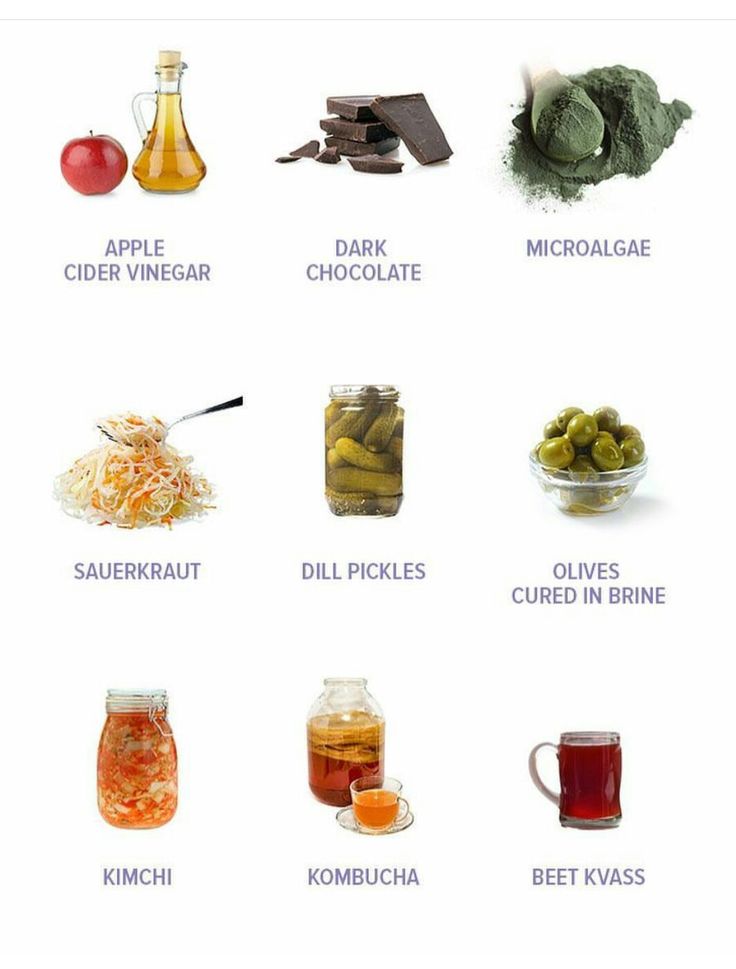
5. Tempeh
Tempeh is a fermented soy product native to Indonesia. Today this product is popular all over the world as a high-protein meat substitute. During fermentation, the amount of phytic acid decreases at a rapid pace, which increases the absorption of microelements contained in the product. In addition, the fermentation process produces vitamin B12, which we usually get from animal products such as meat, eggs, etc. As a result, tempeh is an excellent choice for both vegetarians and those who want to get enough probiotics in their meals.
6. Miso
Miso is a Japanese dish made from fermentation of soybeans, rice, barley, wheat and a special type of fungus. It is a good source of protein and fiber, vitamins, manganese and copper.
7. Natto
Natto is another Japanese dish made from fermented soybeans. Rich in protein and vitamin K2, which is essential for bone and cardiovascular health.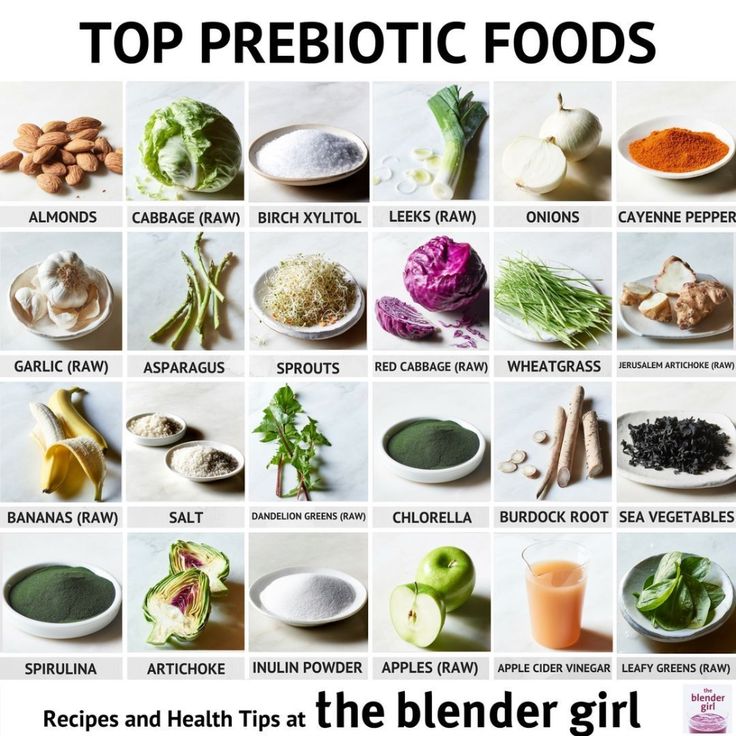
8. Pickled cucumbers
Pickled cucumbers are a good source of probiotics and vitamin K. In addition, the consumption of pickles is good for digestion. An important point: cucumbers pickled with vinegar do not contain live bacteria.
8. Some types of cheese
Many types of cheese are fermented, but this does not mean that every cheese contains probiotics. Good bacteria survive in some types of cheese, such as Gouda, Mozzarella, Cheddar and regular cottage cheese. Read more about cheeses in our material "Cheese guide for a real gourmet".
9. Kvass
Kvass is a fermented drink made from flour and malt, sometimes with the addition of additional ingredients (honey, beets, fruits, berries). Kvass contains probiotics.
10. Apple cider vinegar
Apple cider vinegar helps control blood pressure, normalize cholesterol levels, and is also used for weight loss. In addition, apple cider vinegar contains probiotics. In small quantities, it can be added to salads as a seasoning.
In addition, apple cider vinegar contains probiotics. In small quantities, it can be added to salads as a seasoning.
What foods contain probiotics and prebiotics?
Contents
- Probiotics and prebiotics. What is the difference?
- Products containing prebiotics
- Products containing probiotics
Disclaimer
Please note that all information posted on the site Prowellness is provided for informational purposes only and is not a personal program, a direct recommendation for action, or medical advice. Do not use these materials for diagnosis, treatment, or any medical procedure. Consult your physician before using any technique or using any product. This site is not a specialized medical portal and does not replace the professional advice of a specialist. The Site Owner is not liable to any party who has suffered indirect or direct damage as a result of misuse of materials posted on this resource.
What foods contain probiotics and prebiotics?
Probiotics and prebiotics restore intestinal microflora. They are not digested in the upper intestine and pass into the large intestine unchanged. Thanks to them, the digestive system functions correctly and fully.
Probiotics and prebiotics. What is the difference?
Prebiotics are food components that are not digested or absorbed in the upper gastrointestinal tract, but are fermented by the microflora of the large intestine and stimulate its vital activity. Prebiotics can be taken with antibiotics, they do not cause side effects and are safe in overdose.
Probiotics are live microorganisms that improve the functioning of the gastrointestinal tract when consumed in adequate amounts. The composition of the preparations includes cultures that make up the natural microflora of the human intestine.
Probiotics should not be taken at the same time as antibiotics, because they have a different task: the former supply the body with microorganisms, the latter destroy them.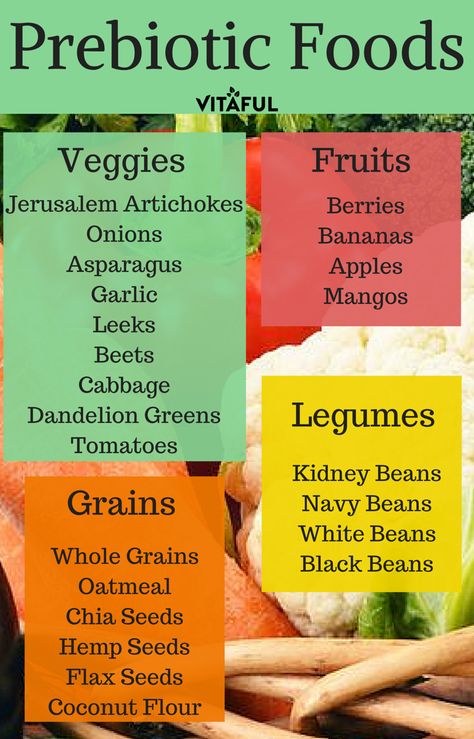
Attention! Probiotics and prebiotics can be administered individually or in combination. Produced drugs, which include probiotics and prebiotics. They are called synbiotics.
Products with prebiotics
Sources of prebiotics are the following foods:
- Chicory. A drink using chicory root was loved by many for its rich taste, similar to coffee. Chicory root helps the body process fatty foods, normalizes digestion, and protects against constipation. It also stimulates the liver.
- Dandelion green. It can be used as an addition to salads. Dandelion greens are a great source of fiber. It lowers cholesterol, has a diuretic and anti-inflammatory effect.
- Jerusalem artichoke. This plant is better known as "earth pear". Its regular use accelerates metabolic processes, strengthens the immune system, has a positive effect on the functioning of muscles and the nervous system.
- Garlic. This fragrant seasoning increases the number of beneficial bacteria in the intestines.
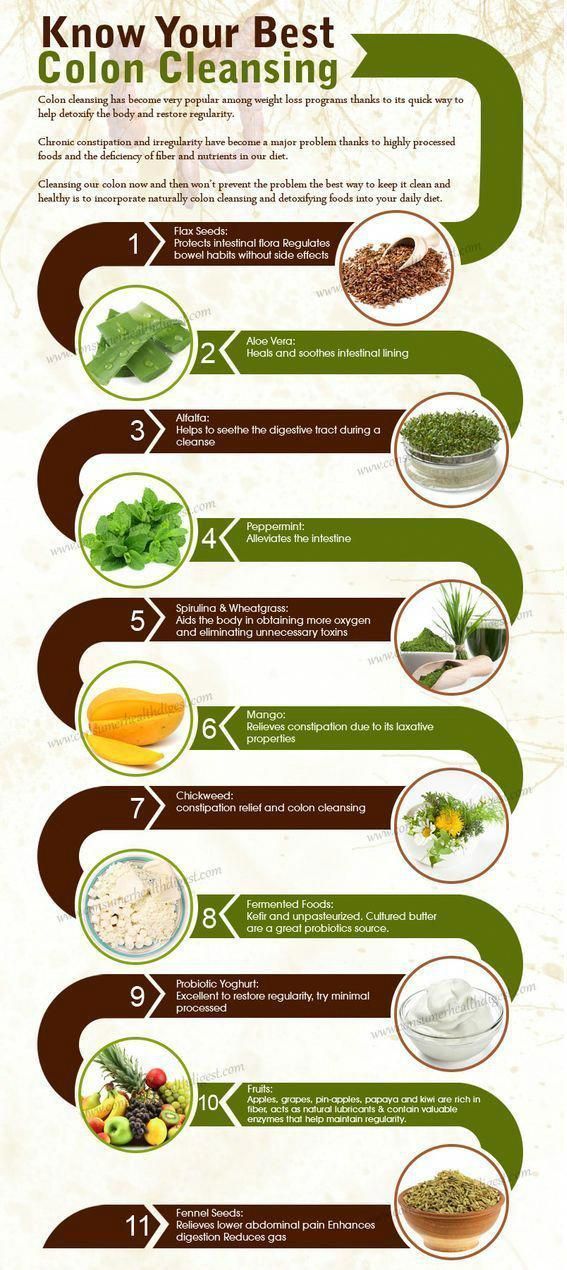 With the help of garlic, you can well strengthen the immune system, as it actively fights against harmful bacteria that provoke diseases. This property is especially useful in the treatment and prevention of respiratory diseases.
With the help of garlic, you can well strengthen the immune system, as it actively fights against harmful bacteria that provoke diseases. This property is especially useful in the treatment and prevention of respiratory diseases. - Bow. Able to strengthen the intestinal microflora. Reduces the likelihood of developing cancer.
- Asparagus. Facilitates the work of the intestines, has anti-inflammatory properties.
- Bananas. Facilitate the work of the stomach, fight bloating and flatulence.
- Apples. Reduce the spread of harmful bacteria, regulate cholesterol levels, accelerate fat metabolism.
Products containing probiotics
List of foods with probiotics:
- Yogurt. Live bacteria are found only in yogurt that has not been pasteurized. This must be taken into account when purchasing a product.
- Kefir. This dairy product is recommended for people with diseases of the stomach, pancreas and duodenum.
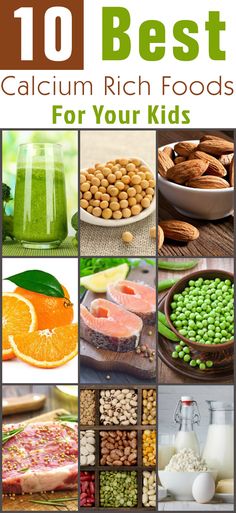 Natural kefir inhibits the active reproduction of Helicobacter pylori bacteria.
Natural kefir inhibits the active reproduction of Helicobacter pylori bacteria. - Mozzarella, gouda, cheddar cheeses. In addition to saturating the body with probiotics, these cheeses normalize blood pressure and prevent the occurrence of cardiovascular diseases.
- Sauerkraut. Rich in vitamins and trace elements, protects the eyes from visual impairment.
- Pickles. Pickled cucumbers, tomatoes, or peppers are high in probiotics. Pickles should not contain vinegar.
- Kombucha. The drink prepared on its basis is Kombucha. It reduces the impact on the body of toxic substances, normalizes the work of the stomach and pancreas.
Probiotics and prebiotics help to improve the functioning of not only the digestive system, but the whole organism as a whole.
Disclaimer
Please note that all information posted on the site Prowellness is provided for informational purposes only and is not a personal program, a direct recommendation for action, or medical advice.